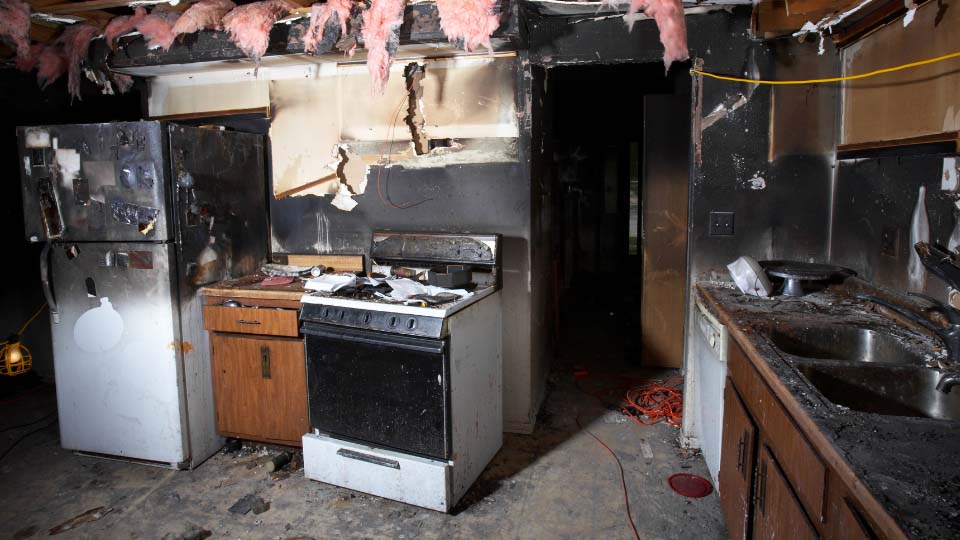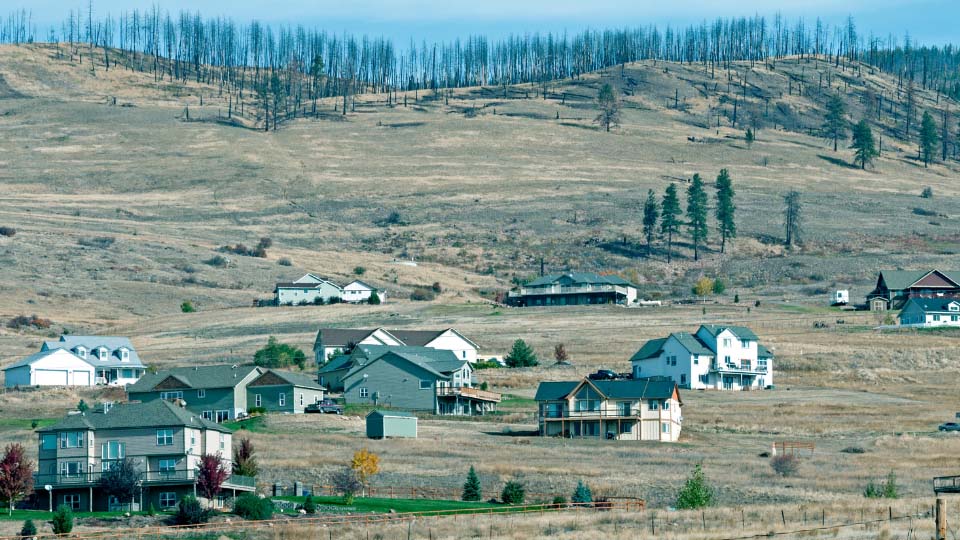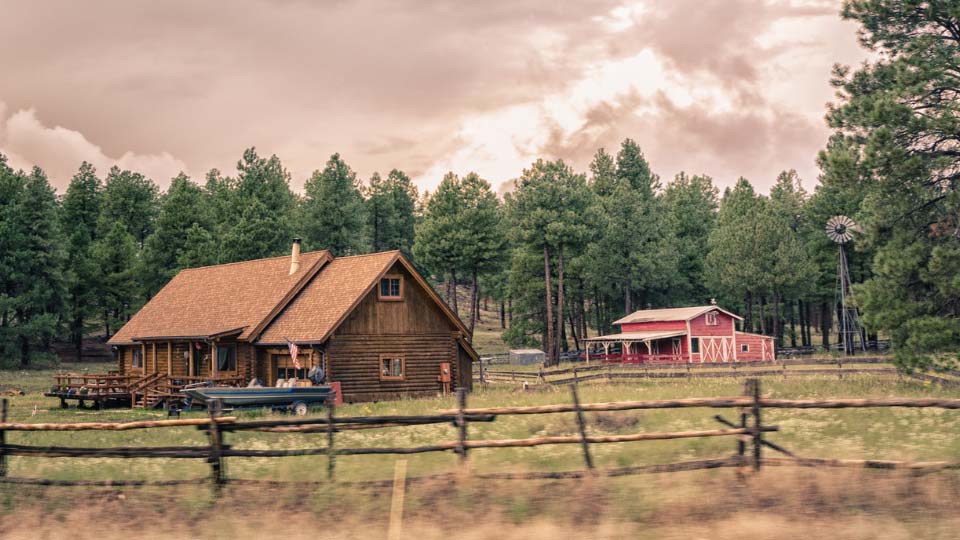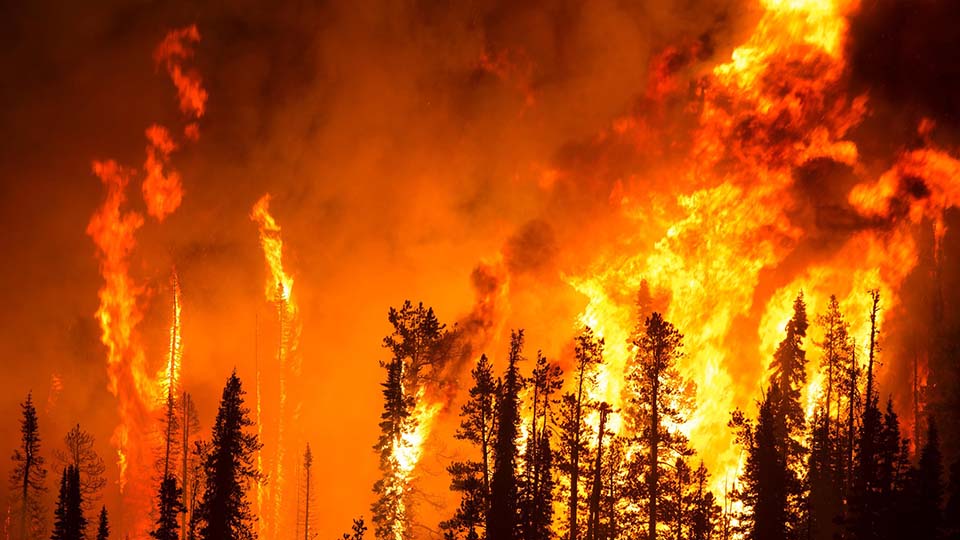Cleaning Up After a Fire Disaster

Introduction
Natural and manmade disasters make a profound impact on people, land, animals, the environment and the economy. Each year, the destructive force of wildfires affects thousands of lives. If your home has been in the path of a wildfire, the cleanup process may need some special consideration. Here are some tips for various aspects of cleanup and salvage.
Smoke Damage Cleanup
Fire retardants, in the form of chemical gels, foams, and powder are effective tools that firefighters use in controlling fires. Wildfire retardants are usually ammonium phosphate marked with a colored dye. Ammonium phosphate is basically a concentrated agricultural fertilizer that binds oxygen, retarding the fire growth. The dye helps pilots and ground crew see the areas that have been treated. Following the fire, remove any retardant using a brush, water and detergent as quickly as possible. Do not use chlorine products to help
Fire Retardant Concerns and Cleanup
Fire retardants, in the form of chemical gels, foams, and powder are effective tools that firefighters use in controlling fires. Wildfire retardants are usually ammonium phosphate marked with a colored dye. Ammonium phosphate is basically a concentrated agricultural fertilizer that binds oxygen, retarding the fire growth. The dye helps pilots and ground crew see the areas that have been treated. Following the fire, remove any retardant using a brush, water and detergent as quickly as possible. Do not use chlorine products to help with removal of retardants. Chlorine combines with ammonia to form chlorine gas which is toxic to humans and animals. If you are working in an area where retardant is being used, you may wish to use a particle respirator (a filter face mask) to prevent irritation to your airway system. Choose masks that have the words “NIOSH” and either “N95” or “P100.” Appropriate masks may be sold at hardware stores and pharmacies. Choose masks that have two straps that go around the head. Do not use masks with only one strap as they do not seal as well to the face.
Soot, Ash and Smoke Concerns
Soot and ash can cause minor irritation to eyes and skin and have harmful effects on individuals who are sensitive to debris or have respiratory illnesses or asthma. Encourage individuals with respiratory issues to avoid cleanup and breathing harmful air.
Smoke from fire and wildfire can irritate eyes, skin, nose, throat and lungs. Smoke can cause coughing and wheezing and makes it difficult to breathe. Stay indoors and reduce physical activity if you are subject to asthma or heart disease. Wearing a “particulate respirator,” the same filter face mask referred to in the previous section, can help protect your lungs from wildfire smoke exposure. Wearing a mask when cleaning ash from your house can be helpful.
When vacuuming use a vacuum with a HEPA (high efficiency particulate absorbing) filter and change the filter often.
Begin the Outside Cleanup Process
When returning to a home that has survived a wildfire, begin cleaning by sweeping the ash off the roof. It is important to also clean the chimney. If the chimney is very dirty, call a professional chimney sweep. Next, clean the house gutters by using a shop vacuum or sweeping out by hand. After the gutters are clean, sweep off the house exterior walls and windows, especially ledges where soot could have built up. Following the house sweeping and soot and ash removal, move on to clean the entire exterior of the home. Wash the house by using the garden hose or a power wash system. Finish by cleaning windows with a window cleaner.
Remember to sweep or vacuum the walkways and driveways to remove ash and soot. If you are unable to remove the soot and ash from the lawn, water it lightly with the garden hose for a week, and the soot and ash will recede into the ground.
Here are nine tips taken from FEMA (Federal Emergency Management Agency) for cleaning up your home and property after a fire. http://www.fema.gov/news/
- Pressure wash or scrub all exterior surfaces including walls, walks, drives, decks, windows and screens.
- Wash all interior walls and hard surfaces with a steam cleaner. Don't forget inside cabinets, drawers and closets. Steam undersides of furniture, tables and chairs.
- Launder or dry clean all clothing, linens and bedding.
- Wash all movable items, including picture frames and knick-knacks with a steam cleaner and a soft microfiber cloth.
- Disinfect and deodorize all carpets, window coverings, upholstered furniture and mattresses with steam.
- Upholstery, fabric window treatments, etc., can be spray-treated with deodorizing products available at most supermarkets. Do not use odor-masking sprays since they just cover up the problem and don’t last long term. Steam actually melts the tar and neutralizes the odor and carbon film left by forest fire, cigarette smoke or wood burning fireplaces and stoves.
- Have heating, ventilating and air-conditioning units and all ductwork professionally cleaned to remove soot, ash and smoke residue. Change filters when you first return to the premises and at least once a month for the first year.
- Vacuum dry aerial fire retardant or firefighting foam residue from inside the house or car. Pressure wash the home/car exterior, and use a steam cleaner to remove the stuck-on residue from inside surfaces.
Food that Has Been Exposed to Fire Damage
Several factors can affect food that has been exposed to fire including heat, toxic fumes, smoke and chemicals used to control the fire.
Dispose of any fresh food that shows signs of damage from heat or fire, including ash or smoke. Any food that has come in contact with liquid waste, sewage, chemicals and flood waters may be damaged and should not be consumed. Any food displaying an off odor or signs of spoilage should also be thrown out.
If food such as grains or flour is caked, doesn’t flow freely, or is contaminated with ash, water, or chemicals, discard and replace.
Excessive heat produced by fires can influence the safety of stored food. If the heat of the fire doesn’t cause the jar to break, high temperatures can cause some bacteria to spoil commercial or home-canned food. High temperatures can cause jar lids of home-canned food to come unsealed, allowing bacteria to get into the food. The jar lid may “seal” again when the temperature drops, causing an unsafe jar to appear safe. It is recommended that any home-canned food that has been exposed to the heat of fire be discarded. The jars may be reused but the food inside should be thrown away.
Toxic fumes can be released from burning materials and can contaminate food. Throw away food stored in permeable or semi-permeable packaging such as cardboard and plastic wrap. Also, home-canned food and food in screw-top jars may have been adversely affected by heat and toxic fumes and need to be thrown away.
If a wildfire caused evacuation from your home and power was not available to keep refrigerators and freezers running, check food immediately since it may have spoiled. Frozen food still containing ice crystals can safely be refrozen, but discard any refrigerated food if the refrigerator temperature reached 40 F or higher. Place spoiled food in heavy trash bags and seal. Do not let bags come in contact with children or pets.
Use clean, potable water for drinking and cleaning. After food has been removed, clean inside surfaces with a solution of dish soap and water. Use a mixture of 2 tablespoons of baking soda to 1 quart of water to help remove odors.
Fire Prevention
Fire prevention is always a top priority. You can help with prevention by checking your home situation, fire proofing and creating a defensible space if you live in a grassland, forest, or heavily wooded area. Fire will only burn if fuel is present. Fuel can be your landscaping, woodpiles, decks, etc. To create your survivable space, take the following steps within 30 feet of your home, 50 feet if you live in a heavily treed area or 100 feet if your home is on a hillside:
- Introduce more native vegetation.
- Space trees at least 10 feet apart.
- Remove dead or dying trees and shrubs.
- Keep trees and shrubs pruned. Branches should be a minimum of 6 feet from the ground and shrubs under trees should be no more than 18 inches high.
- Mow your lawn regularly and dispose promptly of cuttings and debris.
- Maintain your irrigation system.
- Clear your roof, gutters and eaves of debris.
- Trim branches so they do not extend over roof or near the chimney.
- Keep firewood and storage tanks 50 feet from home, and clear areas at least 10 feet around them.
- Store flammable liquids properly.
- Do not connect wooden fencing directly to your home.
Preparedness
Preparedness is a critical element in our lives. Be prepared by making or purchasing a 72-hour emergency kit containing, water, food, clothing and other special items your family may need. Being prepared will help to alleviate fear and provide life sustaining items. Keep the kit in a location that is familiar to all family members and easily accessed. Remember to keep cell phones charged and automobiles fueled if the time arises for you to leave an area.
Natural disasters can affect our lives, yet being prepared is the best way to reduce fear and avoid stress.
References and Resources
- Complete Guide to Home Canning (Agriculture Information Bulletin No. 539). 1994. USDA & Extension Service.
- Drost, Dan. 2005. Beans in the Garden. Utah State University Extension. Logan, Utah.
September 2012
Utah State University Extension
Peer-reviewed fact sheet
Authors
Carolyn Washburn, Associate Professor, USU Extension Washington County, and Christine Jensen, Associate Professor, USU Extension, Emery County
Related







